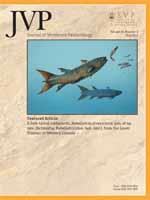In the early 20th century, human skeletal remains were excavated from the Vero Beach site in southeastern Florida in direct stratigraphic association with extinct late Pleistocene mammals, including giant ground sloths, armadillos, carnivores, camels, tapirs, and horses. Despite the demonstrable stratigraphic context, prominent scientists during the early 20th century, such as the anthropologist Aleš Hrdlička, dismissed these human remains from the Vero Beach site as younger, intrusive burials. Although several other important late Pleistocene/early Holocene sites have been found elsewhere in North America with human and extinct faunal association, the Vero Beach site remains significant because of the quality of preservation of the human skeletal remains, and its geographic location in the southeast. More recent attempts to provide age control at Vero, e.g., using direct 14C dating of associated fossil bones, have so far been unsuccessful, including in this study, almost certainly resulting from diagenesis. Here we establish the relative ages of the fossils from Vero Beach by comparing the relative uptake of REEs (rare earth elements) during fossilization. The human and late Pleistocene mammal specimens found in situ from the same stratigraphie levels (stratum 2 and the base of stratum 3) at Vero Beach have similarly high REE concentrations and patterns; the concentrations are significantly greater than those from a control group of modern mammals from the same area. We therefore interpret these data to indicate that the humans are contemporaneous with late Pleistocene mammals from the Vero Beach site in Florida.
How to translate text using browser tools
1 May 2012
Humans were Contemporaneous with Late Pleistocene Mammals in Florida: Evidence from Rare Earth Elemental Analyses
Bruce J. MacFadden,
Barbara A. Purdy,
Krista Church,
Thomas W. Stafford
ACCESS THE FULL ARTICLE

Journal of Vertebrate Paleontology
Vol. 32 • No. 3
May 2012
Vol. 32 • No. 3
May 2012




